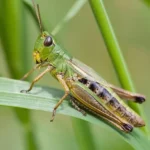
Because of its ear-like fins, the Dumbo octopus is named after Walt Disney’s famous character Dumbo the elephant. Dumbo octopi are classified into 37 different species. These fascinating creatures can be found in all of the world’s oceans. They are rarely seen because they live on the seafloor at depths ranging from 1300 to 23000 feet. Other octopi species live in shallower waters. Dumbo octopi are not considered endangered because little is known about them.
The majority of dumbo octopi species are small, measuring no more than 8 inches in length. The largest specimen ever recorded measured 6 feet long and weighed 13 pounds.
The Dumbo octopus has a soft, head-shaped body and eight arms. They are linked together by thin skin flaps. On both sides of the “head,” there are two ear-like fins.
The length of the suckers distinguishes males and females. Males have longer suckers and two tentacles that help them mate.
The body can be red, green, or orange in color.
Swimming requires the use of arms and flippers. Arms are outfitted with small harpoon-like barbs that are used to catch prey.
The Dumbo octopus can swim by flapping its fins, contracting and expanding its arms, or propelling water from its funnel. Each of these techniques can be used independently by the animal, or they can be combined to swim.
The fastest swimming is associated with the most rapid release of water from the funnel. When a dumbo octopus needs to flee from predators, it employs this technique.
Because the dumbo octopus spends the majority of its life at great depths, it does not have many predators. Sharks and killer whales are the primary predators of dumbo octopi.
When swimming near the surface of the water, dumbo octopus eats a variety of crustaceans, bivalve, worms on the sea floor, and copepods (which are part of the zoo-plankton).
The prey is swallowed whole by the Dumbo octopus. As a result, the size of the prey never exceeds 1-2 mm.
There is no mating season for the Dumbo octopus. Throughout the year, females can deposit eggs.
Males have a large segment on one arm that is used to deliver packages of sperm into the female’s body.
Inside the female’s body, eggs are fertilized. She keeps the eggs in various stages of development inside her body. When the eggs reach the required maturity, they are released and placed beneath the rocks or shells.
Female does not look after the children. The duration of the hatching period is unknown. Dumbo octopi that have just been born are large, well developed, and capable of surviving on their own.
The average lifespan of a dumbo octopus is 3 to 5 years.










Your blog post was so captivating, I completely lost track of time and ended up being late for my next appointment (oops!). Your writing is like a ray of sunshine on a cloudy day, bringing warmth and joy to my otherwise dreary existence. I love how you blend personal anecdotes with factual information, making it feel like I’m having a conversation with a close friend instead of just reading another boring article. Thank you for brightening up my day, and I can’t wait to see what you have in store for us next! 🌞🤗